ATI Radeon HD 3870 X2: 2 GPUs 1 Card, A Return to the High End
by Anand Lal Shimpi on January 28, 2008 12:00 AM EST- Posted in
- GPUs
Last May, AMD introduced its much delayed Radeon HD 2900 XT at $399. In a highly unexpected move, AMD indicated that it would not be introducing any higher end graphics cards. We discussed this in our original 2900 XT review:
"In another unique move, there is no high end part in AMD's R600 lineup. The Radeon HD 2900 XT is the highest end graphics card in the lineup and it's priced at $399. While we appreciate AMD's intent to keep prices in check, the justification is what we have an issue with. According to AMD, it loses money on high end parts which is why we won't see anything more expensive than the 2900 XT this time around. The real story is that AMD would lose money on a high end part if it wasn't competitive, which is why we feel that there's nothing more expensive than the 2900 XT. It's not a huge deal because the number of people buying > $399 graphics cards is limited, but before we've started the review AMD is already giving up ground to NVIDIA, which isn't a good sign."
AMD has since released even more graphics cards, including the competitive Radeon HD 3870 and 3850, but it still lacked a high end offering. The end of 2007 saw a slew of graphics cards released that brought GeForce 8800 GTX performance to the masses at lower price points, but nothing any faster. Considering we have yet to achieve visual perfection in PC games, there's still a need for even faster hardware.
At the end of last year both AMD and NVIDIA hinted at bringing back multi-GPU cards to help round out the high end. The idea is simple: take two fast GPUs, put them together on a single card and sell them as a single faster video card.
These dual GPU designs are even more important today because of the SLI/CrossFire limitations that exist on various chipsets. With few exceptions, you can't run SLI on anything other than a NVIDIA chipset; and unless you're running an AMD or Intel chipset, you can't run CrossFire. These self-contained SLI/CrossFire graphics cards will work on anything however.
AMD is the first out of the gates with the Radeon HD 3870 X2, based on what AMD is calling its R680 GPU. Despite the codename, the product name tells the entire story: the Radeon HD 3870 X2 is made up of two 3870s on a single card.
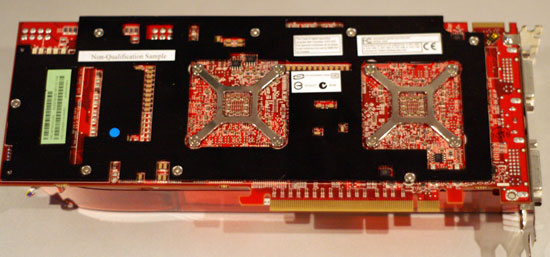
The card is long, measuring 10.5" it's the same length as a GeForce 8800 GTX or Ultra. AMD is particularly proud of its PCB design which is admittedly quite compact despite featuring more than twice the silicon of a single Radeon HD 3870.
On the board we've got two 3870 GPUs, separated by a 48-lane PCIe 1.1 bridge (no 2.0 support here guys). Each GPU has 16 lanes going to it, and then the final 16 lanes head directly to the PCIe connector and out to the motherboard's chipset.
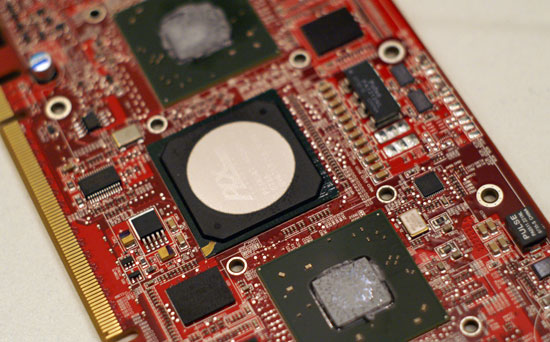
Two RV670 GPUs surround the PCIe bridge chip - Click to Enlarge
Thanks to the point-to-point nature of the PCI Express interface, that's all you need for this elegant design to work.
Each GPU has its own 512MB frame buffer, but the power delivery on the board has been reworked to deal with supplying two 3870 GPUs.


The Radeon HD 3870 X2 is built on a 12-layer PCB, compared to the 8-layer design used by the standard 3870. The more layers you have on a PCB the easier routing and ground/power isolation becomes, AMD says that this is the reason it is able to run the GPUs on the X2 faster than on the single GPU board. A standard 3870 runs its GPU at 775MHz, while both GPUs on the X2 run at 825MHz.
Memory speed is reduced however; the Radeon HD 3870 X2 uses slower, more available GDDR3 in order to keep board cost under control. While the standard 3870 uses 2.25GHz data rate GDDR4, the X2 runs its GDDR3 at a 1.8GHz data rate.
AMD expects the Radeon HD 3870 X2 to be priced at $449, which is actually cheaper than a pair of 3870s - making it sort of a bargain high end product. We reviewed so many sub-$300 cards at the end of last year that we were a bit put off by the $500 pricetag at first; then we remembered how things used to be, and it seems that the 3870 X2 will be the beginning of a return to normalcy in the graphics industry.
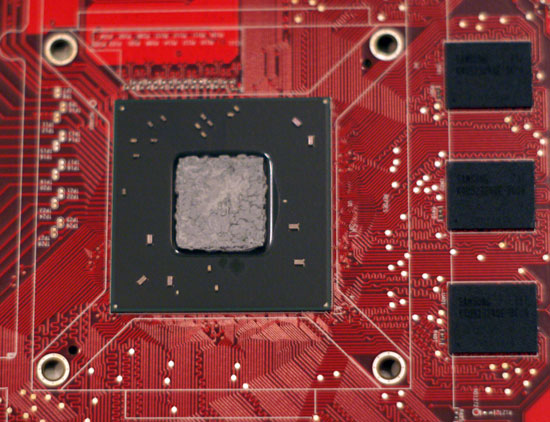
One GPU on the Radeon HD 3870


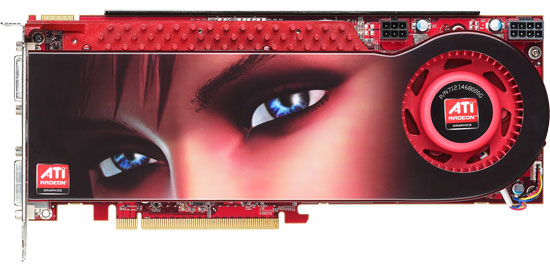
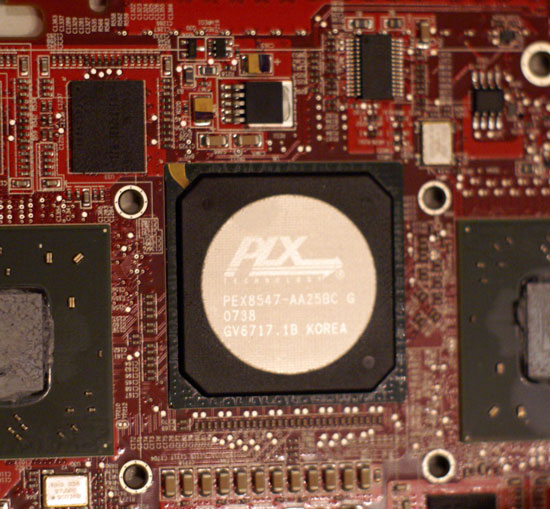
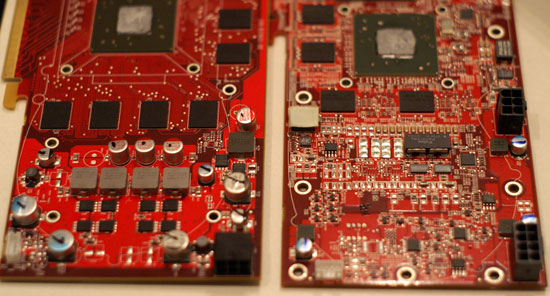

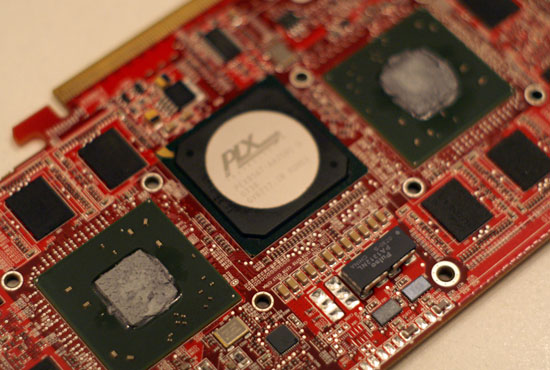








74 Comments
View All Comments
Blacklash - Wednesday, January 30, 2008 - link
I'd like to see a round up of ATi and nVidia's current mid to high range. Test them in games that allow 8xAA. I am hearing around in quite a few places ATi cards catch up or pass nVidia when you move from 4x to 8xAA. I'd love to see Anand prove this or debunk it.Giacomo - Tuesday, January 29, 2008 - link
I have to admit, even being a fan of nVIDIA, that I fell in love with this card. I like it in almost every aspect, I'm astonished by its combination of complexity and smooth working. Well: almost smooth, due to beta drivers. And this is an element of bigger interest too: there's even a bigger distance to put between itself and the rivals, when mature drivers are released.That said... I'm designing the last points of my new machine, I was ready to go with a 8800GTS 512MB, but suddenly stopped to look at this one... And I think I'll go with it.
But... On which motherboard? These are the thoughts I'd like to share with you, I ask you: did you notice that Anandtech ones are among the best results in the various X2 reviews online? And did you notice they're obtained on a 780i platform?
Initially, the most obvious idea was to buy this card together with an Asus Rampage Formula, so nicely reviewed on these pages. But now, looking at the system used for this review, the question: wouldn't my dear old desired eVGA 780i SLI an even better board for the new system, for this 3870 X2?
Don't need crossfire nor SLI, really.
Reviewer's opinion would be very appreciated too, of course, being the one who planned this "curious" match.
Giacomo
XrayDoc - Tuesday, January 29, 2008 - link
Does anyone know if the Intel X48 chipset will allow two of these cards to run in CrossfireX mode, or will you have to purchase an AMD chipset motherboard?karthikrg - Monday, January 28, 2008 - link
This seems to be a stopgap solution though its heartening to see AMD/ATI having the faster single card solution now (albeit multi-GPU). With the Nvidia 9800GX2 due soon, the race is sure to get interesting. Hope AMD has something up its sleeves with the R700FullHiSpeed - Monday, January 28, 2008 - link
This has nothing to do with graphics, but that PLX PEX8547 in the picture is a bridge, not a switch. Unfortunately, PLX doesn't make a Gen 2 PCIE bridge or switch. One would imagine that two GPU's on one board would benefit from the increased bandwidth of Gen 2. The PLX bridge/switch web page says the switches (and not the bridges) give "Low Latency Transfers" and "True Peer-to-Peer Data Transfers", both of which are probably important to this parallel processing application. This could explain why "the HD 3870 X2 is systematically 5% faster on average than the CrossFire solution" (nach Tom) in spite of the 16 lane Gen 1 bottleneck to the north bridge.Slaimus - Monday, January 28, 2008 - link
I am still confused by the way AMD/ATI is allocating RV670 chips. If you check on newegg, there are well over 100 Sapphire 3870X2s in stock, but the Sapphire 3870 is still out of stock.The same thing was happening during the initial 3870/3850 launch, where way too many of the 3850 were produced compared to the 3870. Also, none of the 3850s were of the 512MB type.
AMD should be filling the 3870 demand with the RV670 chips first, since it is probably the most profitable and most reasonable product.
phaxmohdem - Monday, January 28, 2008 - link
All I can think of is 2 GPU's 1 Cup :Sflat6 - Monday, January 28, 2008 - link
The article says: "the performance is indeed higher than any single-card NVIDIA solution out today", but they didn't test an 8800 Ultra. In some cases the card was barely beating the 8800 GTX. How would it stack up against an Ultra? I understand that maybe they didn't compare against an 8800 Ultra because of the price difference, but the reviewer was all excited about AMD/ATI's return to the high-end; at the high-end, cost is no object. And why two 8800 GTs? If this is the high-end, why choose mid-price cards for SLI? Why not use two Ultras?I'm not saying a single Ultra would have trounced this card, only that I would have liked to see the comparison. I do think, however, that if they'd gone truly high-end on the SLI side, two Ultras might have killed it.
strikeback03 - Monday, January 28, 2008 - link
http://www.anandtech.com/video/showdoc.aspx?i=3175...">http://www.anandtech.com/video/showdoc.aspx?i=3175...their previous testing showed the ultra as being similar in performance to the 8800 GTS 512 in most tests. So an Ultra (or 2 of them in SLI) might have done better in the AA tests, but not much else it would seem.
flat6 - Monday, January 28, 2008 - link
Thanks, I just read it. Good grief. I didn't realize the GTS 512 was that fast. Point taken.